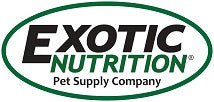
Background information
The correct diet of sugar gliders is controversial subject. Like many exotics pets, a sugar glider's nutritional needs are somewhat of a mystery, but the longer they are kept in captivity the more we learn about their needs. Unfortunately you'll find plenty of conflicting informatino out there, which does little to help the situation. However, as with most species, discovering what works nutritionally is a matter of trial and error, and finding what works best for your specific pet and your lifestyle.
Obviously, the nutritional requirements of sugar gliders are of importance to their overall health, and they are prone to metabolic bone disease resulting from an improper ratio of calcium to phosphorus in the diet. If a diet is relatively higher in phosphorus than calcium, calcium will be leached from the bones and other tissues to balance the levels in the blood. This results in a softening of the bones, making them susceptible to fractures, along with a myriad of other health problems related to calcium imbalance. Sugar Gliders (in the wild) feed on eucalyptus gum, sap, insects, nectar, and honeydew (an excretory product of nectar eating insects). They will also eat bird eggs, lizards, small birds and other small prey items. This diet is pretty difficult to replicate in captivity. So a variety of food has been fed in an attempt to somewhat mimic their natural intake and to see what makes them thrive in captivity. There are many 'Diet Plans' that have been, and still are used with success. The main drawback to these plans, are that they are time consuming to blend, require many ingredients, have to be stored refrigerated, and go bad if not used with-in a few days. Although some of these diets are nutritious, many glider owners find it tedious to continuously have to find, purchase and blend all the ingredients together on a regular basis. Owners typically take on the task for a few weeks, then look for alternative, easier methods of feeding. The other drawback to concocting your own diet plan is that you are never sure that your glider is getting the correct nutrition. Protein, vitamin & mineral content can vary from batch to batch. Fortunately, there are now simpler ways to offer a nutritious diet to your gliders..jpg) Ideal Diets for Baby Sugar Gliders
Ideal Diets for Baby Sugar Gliders
Sugar glider joeys that are younger than 6 weeks OOP (Out Of Pouch) should be feeding from their mother or will need to be hand fed using a milk replacer and syringe- see our Joey Kit. Joeys that are 6 to 8 weeks OOP can begin to be weened off of mik and onto a more permanent diet, like pellets, Gliderade, fruits and vegetables. Once your joey is older than 8 week OOP, it should be completely weened and be eating on its own.
Baby sugar gliders must be offered a variety of food types in order to obtain their correct nutritional needs. Feeding a variety or foods while young also helps a glider become less picky when it is older. We suggest that fruits and vegetables (fresh or frozen) be offered on a daily basis (always defrost frozen before offering). Approximately 25% of the glider's diet should consist of these fruits and vegetables. Gliders are particularly fond of fresh apples. The other 75% of your glider's diet should be protein based foods. Examples of protein foods that we suggest are Exotic Nutrition's Instant-HPW diet or Exotic Nutrition's Glider Complete diet. It is important that you keep the ratio of 25% fruits and vegetables to 75% protein based foods. Glider Complete already has 8 varieties of fruits incorporated in with the protein pellets, so if you offer this food, it is not necessary to supplement with fruits.
We also suggest that you offer Gliderade. This product is very high in carbohydrates and contains vitamins and bee pollen (something that gliders feed on in the wild). Gliderade comes in a powder form; you must mix the powder with water, then offer approx. 1 tablespoon per day in a separate dish. We also suggest that a powdered multi-vitamin Glider-Booster can be sprinkled on the glider's fruit daily, and a calcium supplement Glider-Cal can also be sprinkled on any insects you are feeding.
If you want to keep it simple, feed Insect-Eater Diet. It is very easy to use, and it contains all the necessary nutrition. You can introduce dry foods once your baby glider reaches 6 months old. Fresh water should be available at all times.
What to Avoid:
If you offer too many fruits, your Sugar Glider will fill up on that, and not eat the protein based foods. If your baby glider is reluctant to eat the dry Sugar Glider diets, you can entice them by adding some honey or fruit (apple) juice to the dry foods. Make sure that you change the food daily and discard the old food.
Ready to Shop? Browse our Sugar Glider products or Shop By Category
Got Questions? Browse more free Blogs or Contact Us with any inquiries regarding our products.
Notice: Exotic Nutrition cannot provide specific care guidelines on an individual basis. Please consult a veterinarian.
Exotic Nutrition is proud to serve hundreds of universities, zoological parks, veterinarians, research centers and other institutions seeking to advance the health and well-being of exotics worldwide. See a full list of institutions using our products here.
Exotic Nutrition has a heart for animals in need. Through regular donations to rescues, rehabilitators, and special fundraiser events, Exotic Nutrition is making a significant impact in the lives of animals. See a full list of our charitable donations here.

Leave a Comment